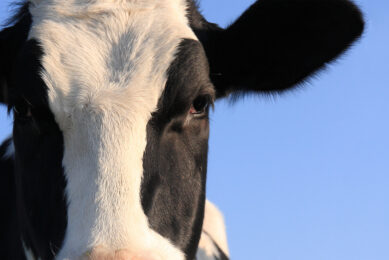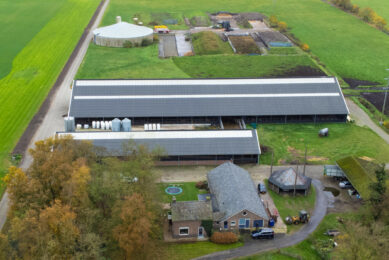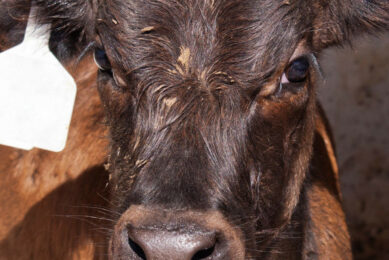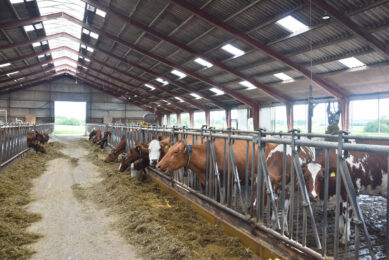Dairy farms play vital role for veal producers in Denmark
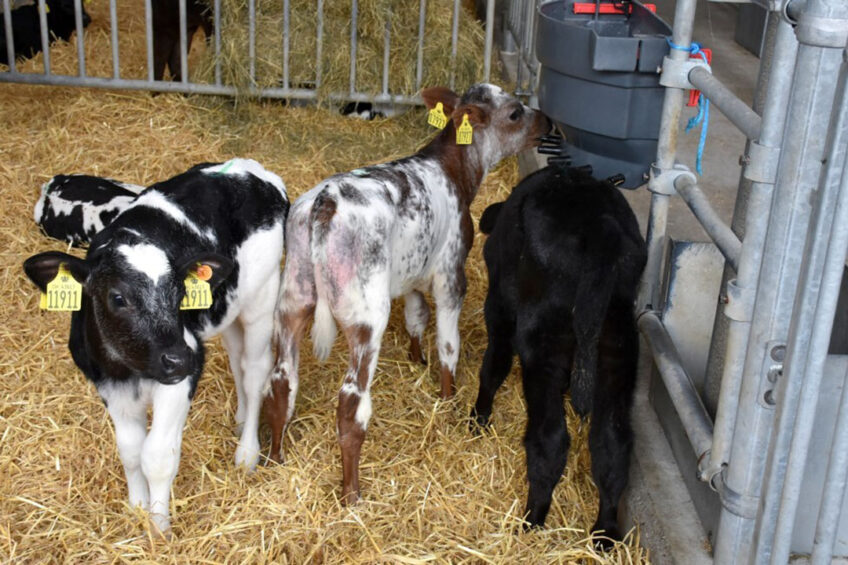
An increasing number of dairy farmers are starting to use sexed beef semen to crossbreed with their herds to produce a calf with added value.
And that’s exactly the animal Danish beef farmer Kristian Sorensen wants to purchase for his Tranbjerg Ostergaard farm located near the town of Arre in Jutland, western Denmark.
Each year, Sorensen produces around 4,000 calves for veal which are then slaughtered at the local Danish Crown abattoir in Holsted. The calves are all bought from 25 local dairy farmers which ensure Kristian has a continuity of supply for his business.
Plus, Sorensen’s business is a good outlet for the dairy farms to sell their crossbred calves to at a higher rate than the traditional dairy-bred bull calves.
In total, 7 employees work on the farm that extends to 600 hectares on which he grows cereals, rapeseed, maize and grass.
“Back in 2010, I bought half this farm from my father and then 9 years later I bought the other half,” says Sorensen. “We began producing 1,000 calves for Danish Crown but have since expanded the business by building new barns and now rear 4,000 calves for veal production each year.”
Danish Calf veal production programme
This particular Danish Crown veal production programme is called Danish Calf and operates with a specific set of guidelines the 160 farmers that supply the calves must follow.
Basically, the calves must be born and reared in Denmark to the highest welfare standards before slaughtering at local abattoirs which are on average less than 2.5 hours travel distance from the farms.
The calves must be fed healthy and natural feed such as colostrum, fresh straw feed or roughage without the use of antibiotic growth promoters.
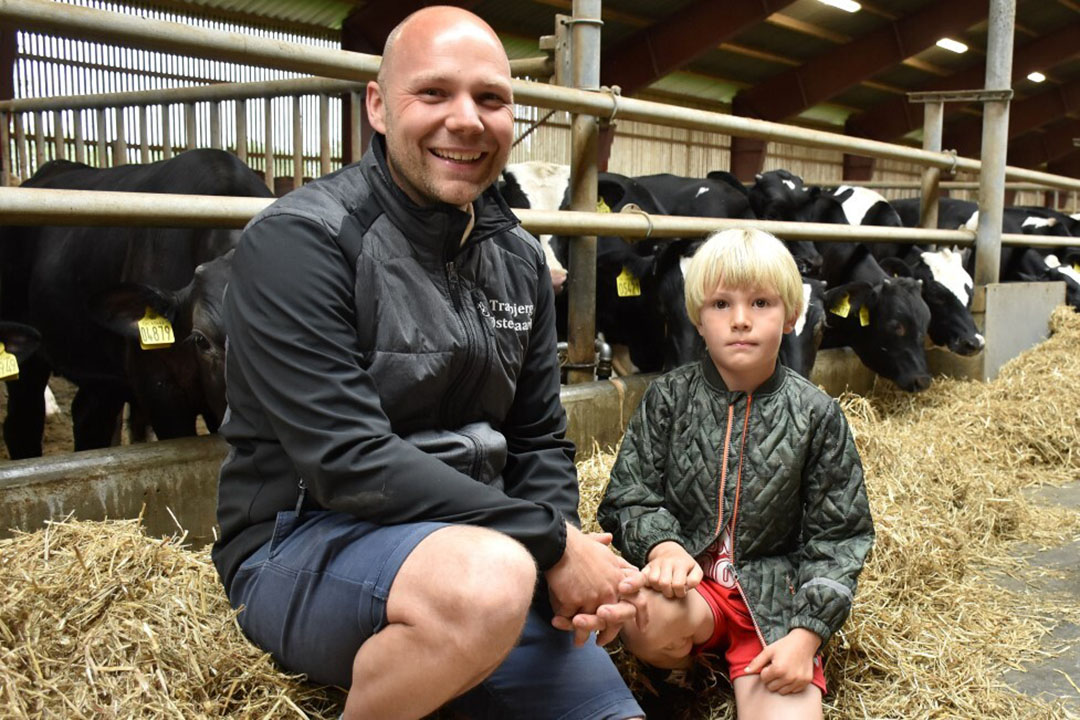
Constant supply from local dairies
Other standards include correct slaughter weights, body shape and fat coverage measures as guided under the programme.
“We buy the calves in at around 3 weeks old,” said Sorensen. “I have a constant supply from 25 local dairy farmers from whom I buy all my calves. In fact, right now we have 2,700 calves on the farm and I just bought another 175 calves from them this week.”
The goal for Sorensen is to rear the calves until they are 9 months old and have reached the target slaughter weights as set out by the Danish Calf programme.
Calves are fed milk for the first 2 months and are then switched to dry feed and roughage until they are ready for slaughter.
“In Denmark we have a national calf price that is set to all farmers,” Sorensen says. “As an example, for a Holstein calf crossbred with a beef sire weighing in around 60kg, I would pay €100 for that animal across the board.
“However, I currently pay a bonus of around €100 for the best male calves, on top of the basic price of €75 per head. This gives the farmer a clear economic incentive to use more beef cattle.”
Crossbreeds calves
All the calves are vaccinated when they arrive on the farm. Sorensen says the crossbred calves have a better feed efficiency rate than the purebred dairy bull calves.
“Two years ago around 20% of the calves I was buying were crossbreeds but that has now increased to around 60%, and will rise even further over the next few years.
“We generally slaughter the calves at 9 months of age when they should reach around 205kg slaughter weight. Generally we receive around €5 per kilogramme deadweight for the calves when slaughtered. Having more crossbreeds and fewer purebred dairy cattle benefits my bottom line and the climate,” he says.
Up until the calves are 3 months old they receive 1kg of bought-in dry feed per day, which rises to 1.2kg to 1.3kg when they are 5 months old and around 1kg up until 9 months old and slaughter. All the calves receive around 2kg of fresh straw per head per day as well.
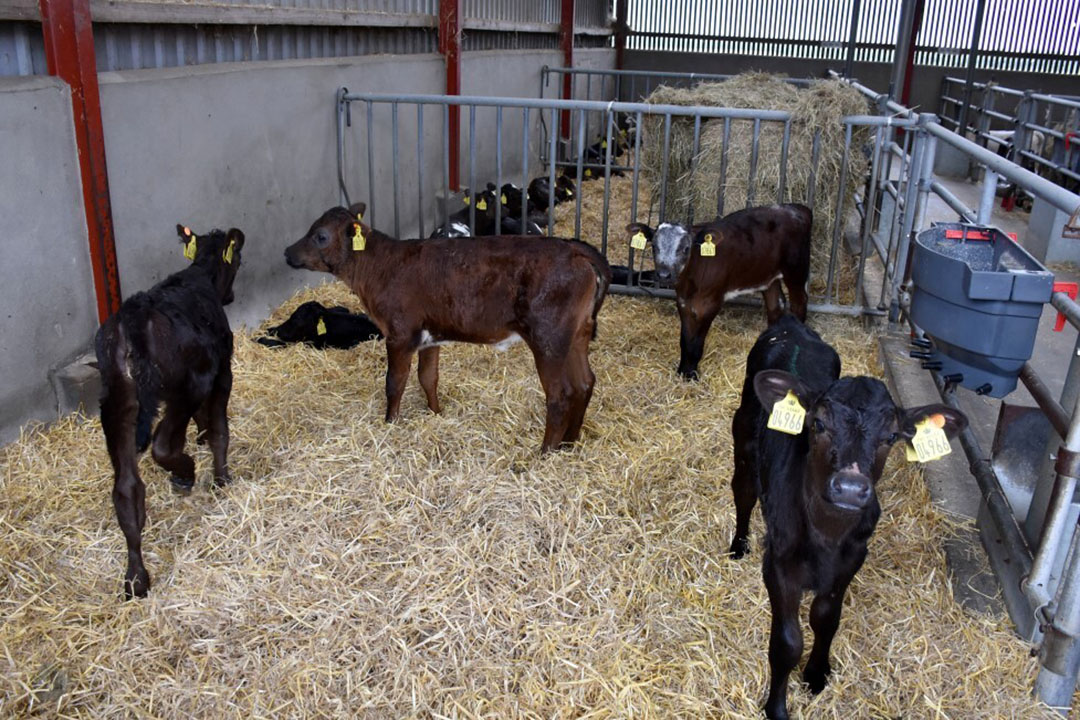
Sorensen is well aware of which beef breed combinations perform the best as he has participated in some feed trials in the past. Measured quantities of feed were fed to a specified batch of calves in special feed troughs. The feed intakes were then compared to the daily liveweight gain of the calves and results calculated.
Sorensen prefers to buy in Belgian Blue, Charolais or Angus beef breeds crossbred with the dairy breeds as they tend to thrive better in his system.
While most of the calves for the veal production programme are males, he also runs a heifer production system running them longer to produce red meat.
Heifers
These heifers fall under Danish Crown’s new Premium Heifer concept, which dictates the cattle must be fed with a high proportion of roughages and must be slaughtered at 18-20 months of age. He hopes to deliver around 600 heifers per year to this special programme.
While 4 people work in the calf system, 1.5 people look after the heifers and 1.5 work in the fields and on maintenance around the farm and machines.
With so many calves on his farm there are certain to be some casualties but using good welfare practices and fresh food, these are kept to a minimum.
“We have a mortality rate of around 3-4% each year,” said Sorensen. “All the calves are well looked after on our farm and we try to keep losses as low as possible.”
Join 13,000+ subscribers
Subscribe to our newsletter to stay updated about all the need-to-know content in the dairy sector, two times a week.



